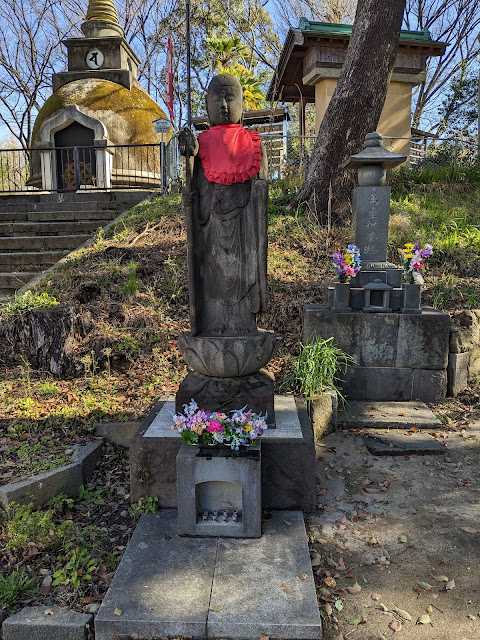During our recent retreat we "re-introduced" the recitation practice of the Kannon-gyo, the 25th Chapter of the Lotus Sutra. Ajari Tanaka introduced this practice early in his time teaching and training students in Vermont as our "Evening Practice". It paired with recitation of the Rishu-kyo, which was the corresponding "Morning Practice". During the retreat, we practiced an abbreviated version of the Kannon-gyo, which omits the prose portion, or main body of the text, and only recites the verse section. This verse section is something of a summary of the prose portion but is also unique in its content.
One of the interesting features of the verse section of the Kannon-gyo is that in its short page and a half the phrase, "nen bi kannon riki" repeats thirteen times. This frequency makes it difficult to ignore and begs to explore its implications. So it is only natural to ask what this phrase means.Nen bi kannon riki, translates to something close to, "bring to mind the power of Kannon". So then, what are we bringing to mind when we contemplate the "power of Kannon"? I think it is fair to say that all across the Mahayana Buddhist world there are practitioners who envision Kannon as a celestial bodhisattva who's concern for our welfare is potent enough that he or she can intercede in our lives to help us with its challenges, even those most serious. Reading the 25th Chapter of the Lotus Sutra certainly leaves one with that impression. Its content depicts Kannon as a benign being who can be invited into our lives to ease our suffering and help us accomplish a meaningful life.
But Shingon views Kannon and all the other buddhas, bodhisatvas, myo-o and devas differently. Kannon, and all the others depicted in the mandalas and elsewhere are symbols. Symbols of the individual facets of the complete, universal buddhahood symbolized by Mahavairocana. Additionally, these symbols point to qualities, attributes and abilities that exist as an inner, outer and universal reality. Meaning, Kannon represents qualities, attributes and abilities that, whether manifest, masked or mixed exist within oneself, within others and are inherent in the nature of the world we live in.
Take a simple example, Kannon is a symbol of both compassion and the capacity to help in a positive way. It is no exaggeration to say that within each of us, we have the ability to think beyond ourselves and hold both a caring feeling and a willingness to help at least some of the people in our lives. Heck, just watching the way we care for and love our dogs and other pets is our inner Kannon at work. Also, I think it is safe to say that each of us has been helped in a kind, considerate and useful way by someone else. Many of us had loving parents and/or grandparents, enjoy dear friendships or other warm relationships that have helped us along the way. So that which Kannon represents exists in ourselves and others. This kind assistance is also built right into the world around us. Everything from the warmth of the sun, to the fresh water we drink and the food that sustains us can be seen as examples of kind help that reduces our suffering and supports our happiness. There is a supportive hospitality built right into our world.
So when we bring to mind the power of Kannon we remember the kindness and ability to offer caring help within ourselves, others and our world.










.jpg)

